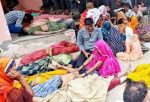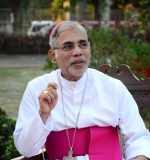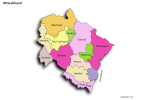There are different ways to define a disaster conventionally. Disasters are defined based on the destruction of human capital. Here the primary question asked is “how many people have lost their lives.” The answer helps people understand the gravity of a particular disaster.
A second way is to focus on the destruction of the physical capital. The question asked is how much stuff or how much money has been destroyed. Answer to this also helps assess a disaster’s impact.
A third way to understand disaster is to consider it as a threat to the existing human as well as social capital. When a group of people is identified as at risk to a disaster we call them ‘vulnerable group,’ or ‘vulnerable society,’ or even ‘vulnerable population.’ That is why in any disaster assessment it is important to identify the vulnerable individuals, families and communities or who as a whole form the vulnerable population.
The term vulnerability has different levels of meaning that changes according to the situations. World Health Organization (WHO) defines vulnerability to disasters as “the degree to which a population, individual or organization is unable to anticipate, cope with, resist and recover from the impacts of disasters.”
When a disaster strikes the particularly vulnerable are the economically poor, socially marginalized, children and orphans, pregnant women, elderly, malnourished, and people who are ill or immune-compromised, ethnic minorities, families headed by women or children, persons living with disabilities, persons living with HIV and AIDS or those located in vulnerable areas such as slopes, river banks and geographically isolated areas.
Some are particularly vulnerable because they tend to take a relatively high share of the disease burden associated with emergencies.
At this point, a discussion is must on the need to bridge the divide between health-aid workers and vulnerable communities. Such a discussion has to focus on how health aid workers can interact with individuals, families, groups and populations affected by disasters.
The first need is to identity existing barriers that hinder interaction between health aid workers and population under their care. By consciously doing so, these barriers could be addressed, minimized if not eliminated. Failing to do this will not only perpetuate these vulnerabilities but enlarge the divide between those affected by disasters and those responding to them.
If not addressed well, the following barriers will confound the effective delivery of the services of the health aid workers.
1. Communication: Coordination and communication is crucial in emergency situations. Disrupted communication systems lead to poor understanding between the service giving facilities and receiving facilities. It hampers the relief organizations’ actual capacity, be it health services or any other form of service.
Consequently, the already limited resources are not effectively utilized to meet the demands. This is most especially true in the case of health aid workers and the beneficiaries of their services at the time of a disaster. In interacting with vulnerable individuals, families and communities, what is important is to understand their most pressing requirement. Poor communication may lead to ineffective delivery of the health care services.
2. Culture: Cultural competency is at the core of high quality, patient-centered care, and it directly impacts how care is delivered and received. Research has shown that lack of culturally competent care directly contributes to poor patient outcomes, reduced patient compliance, and increased health disparities, regardless of the quality of services and systems available. In health care settings, cultural awareness, sensitivity, and competence behaviors are necessary because even such concepts as health, illness, suffering, and care mean different things to different people.
Knowledge of cultural customs enables health care providers to provide better care and help avoid misunderstandings among staff, residents/patients, and families. In the domain of culture, the lack of information, knowledge, understanding or sensitivity to the local culture, or of indigenous knowledge, systems and practices can be a source of barrier too. A health practice, for instance, of local cultures could be foreign to health aid worker responding to the disaster. Here, the technical preparations and background of health aid workers and the local conceptions of health and well-being of individuals, families, groups and populations can be an impediment to a timely and effective delivery of medical and health aid.
3. Rough terrain and extreme weather conditions: The extreme weather often becomes a threat to the successful delivery of relief work. The impact of the extreme weather is significant in large parts of the developing world where populations and health systems are already vulnerable, and disaster response management and infrastructure lacking. Extreme weather often becomes a physical barrier for health aid workers to deliver emergency medical or health interventions in a timely manner. When lives are in danger, this kind of barrier becomes salient. Apart from this in the domain of logistics, especially in the area of transportation extreme weather becomes a barrier to a timely and effective delivery of medical intervention and health aid.
4. The policy environment or institutional arrangements can also be a barrier to a timely, effective and relevant delivery of health aid, as they are need, when they are most needed. The lack of clarity of government strategy, policy, norms and or programmatic approach to medical and health intervention in the event of and aftermath of disasters can be a domain and impediment to the efficient and effective delivery of aid. Lack of funding, too, is a source of effective and efficient delivery of aid by medical and health workers to the affected populations.
Case Study
Let me illustrate this with concrete case from my own personal experience. On April 25, an earthquake of 7.8 magnitude hit Nepal with Ghorka District being the epicenter. Three weeks later, on May 12, another earthquake struck at a magnitude of 7.3 with epicenter in Dolakha District.
Total confirmed deaths were 8,898 and over 22,300 people injured. Around 605,000 housed were fully destroyed and around 290,000 houses were partially damaged.
The Post-Disaster Needs Assessment of the Government of Nepal (PDNA-Gov Nepal) estimated that the earthquake impacted the lives of 8 million people, which, it says, is almost a third of the country’s total population. Further, it said that thirty-one of the country’s 75 districts were affected. A total of 14 districts were declared ‘crisis-hit.’
My team and I stepped into Balthali village in Kavrepalanchok District. While our intention was to assist Caritas Nepal in the provision of medical services, we were open to respond to other needs. In fact, we were assisting Caritas Nepal in the distribution of tin roofing sheets.
Many people gathered together seeking help and among them were kids. I could read from their eyes that they needed more than shelter over their heads; they needed more than health care services.
Yet, our psychological and professional preparation limited our view of service provision to health care services even as we were assisting in the distribution of tin roofing. It was clear to me that the faces of the children were gloomy and yet for those of us who were medical professionals, the most important and urgent needs were health care.
I tried interacting with the children in English and Hindi. The language barrier was clearly evident, apart from the fact that our professional preparation held us captive to a purely medical intervention. How can one indeed communicate our reassurances of help and succor in the language the children could speak and understand?
We started playing with them, taking pictures to lighten up the awkwardness and embarrassments of “first encounters.”
Then it started raining. Intermittent thunderstorms came too. Those kids standing near us held our hands. At every thunderclap the grip of the children’s small hands on my hands tightened. At that very moment I could sense the horror and dread the children must have gone through during the earthquake and the series of aftershocks that terrorized them.
Beyond words, beyond our professional preparation and intention to intervene from the medical point of view I felt only solidarity and the instinctual compulsion to protect them in their fragility and vulnerability. At that moment, the fragility and vulnerability of these children called forth in my being the feeling of tenderness and compassion.
I understood clearly they needed more than health and shelter over their heads. They needed psychosocial support and healing from trauma they suffer.
Concluding Thoughts

• Some barriers are perceived
• Empathies with affected for greater connect
• Should not exploit their vulnerability
• Mindset first money secondary for effective reach
It is important to humanize the delivery of medical and health care services to the vulnerable communities affected by disasters. Focus should be shifted from merely physical care to a more holistic paradigm.
It is also important to address the psychological and social aspects in the process of extending them physical care. It is recommended, therefore, that adequate training be given to volunteers and other health aid workers who involve in caring for vulnerable communities. So that, as Cecil G. Helmann rightly put it: “total therapeutic effect” is achieved.
Health aid workers responding to vulnerable communities may not only operate from the Head which is competence, nor from the Hands which shows skills. Health aid workers bridge the distance from the Heart, where tenderness and vulnerability both reside together.
Fr. Siby Kaitharan, MI, is In-charge of Ministry and Camillian Task Force coordinator. He is based at Yellampet in Telengana state. This is a paper he presented at the international conference on Disaster Risk Reduction at New Delhi on October 7, 2015).










